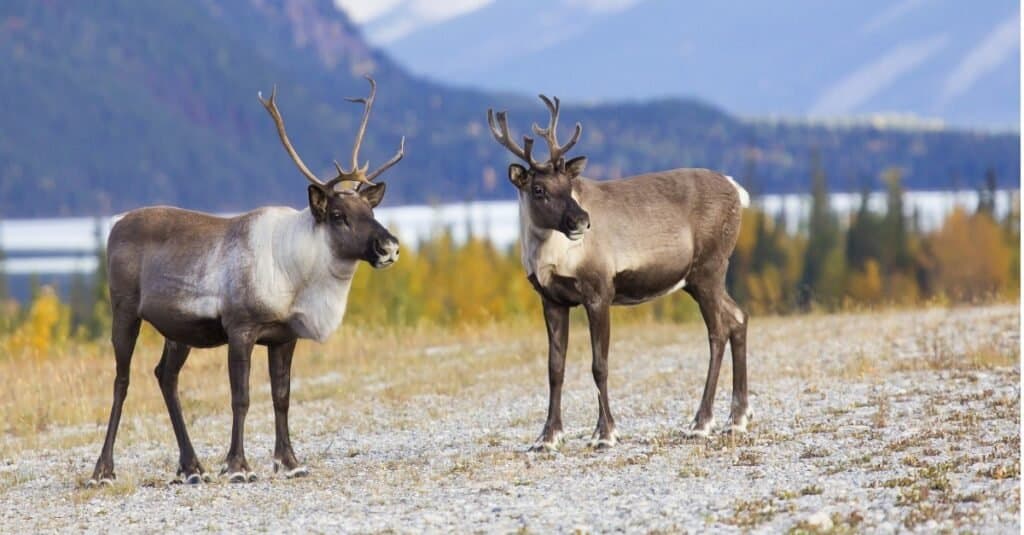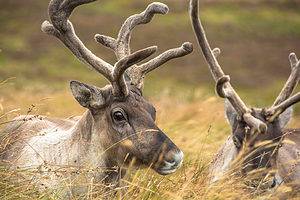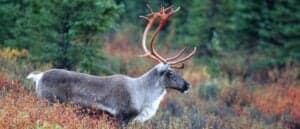The exact number of reindeer in the world is unknown. It’s estimated to be in the range of 7 million, though. Many are domesticated and live in households around the globe, providing milk, meat, and transportation services. They are also important sources of income for many rural communities.
Here are all the facts and figures you need to know about this curious and endearing animal.
How Many Reindeer Exist?

Experts have long debated how many reindeer live in the world.
©iStock.com/RichardSeeley
The question of how many reindeer exist has long been debated among experts. However, the latest studies say there are about 7 million wild and domesticated reindeer worldwide, with about 3.5 million animals in North America, 1 million wild reindeer in Eurasia, and nearly 3 million domestic reindeer in northern Europe. Whatever the exact figure is, it is clear that reindeer are an abundant species and can be found in the coldest corners of the planet.
Reindeer are especially prevalent in the Northern Hemisphere, found mainly in Scandinavia, Russia, and North America. Thanks to their immense adaptability, they have managed to coexist with humans for centuries and are now among the most common domesticated animals in the world.
Why Is the World’s Reindeer Population Declining?

With climate change and the rise of temperatures, snow melts earlier and freezes later, changing the availability of reindeer food and shelter.
Unfortunately, the reindeer population is declining mainly due to climate change. As temperatures rise, snow melts earlier and freezes later. This changes the availability of food and shelter for reindeer, making it more difficult for them to survive. In this section, we will show you how reindeer are affected by rising temperatures.
Food Shortage
Warmer temperatures favor the growth of larger plants, causing lichens — reindeer’s primary food source — to be outcompeted. Lichens are a symbiotic combination of a fungus and a photosynthesizing organism and are very sensitive to heat. Common lichens can’t adapt to temperature change as quickly as the Earth is warming.
Increased Rainfall
Rising temperatures also lead to increased precipitation in the Arctic, which can be a big problem for the tundra because it can cause layers of hard, icy ice to form and cover the ground. This layer, known as frost blocking, prevents reindeer and other animals from poking their noses out to get to their food.
In addition, ice can also damage plants growing on the tundra. It can compact the soil, killing roots, and it can also crush the plants themselves. Unfortunately, precipitation in the Arctic is already increasing due to climate change, posing a serious threat to the tundra’s reindeer and its other inhabitants.
Insects
As anyone who has ever tried to enjoy a picnic on the beach can attest, insects can be a mere nuisance. However, for reindeer, a species that often inhabits cold and remote areas, insects can be a real problem as they can reduce the quality and quantity of reindeer forage. This can lead to poor body condition, affecting the reindeer’s ability to survive.
In addition, insects can also be disease vectors and prevent pregnant females from gaining sufficient weight to produce healthy calves. To avoid these adverse effects, reindeer often change their feeding patterns, travel greater distances to find suitable forage, and seek caves or other areas that provide shelter from insects.
How Many Reindeer Are Domesticated?

The number of domesticated reindeer in the world reaches about 3 million.
©Jeff McGraw/Shutterstock.com
The generally quoted figure for the world’s domesticated reindeer population is 3 million. Reindeer husbandry is a significant industry in Russia, where the animals are used for their meat, skins, and antlers.
Still, in addition to their use in Russia, reindeer are raised in other countries, such as Finland, Norway, and Greenland.
Up Next…
The photo featured at the top of this post is © MARISINA/Shutterstock.com
Sources
- Britannica, Available here: https://www.britannica.com/animal/reindeer
- British Broadcasting Corporation, Available here: https://www.bbc.com/news/science-environment-46516033
- Discover Silversea, Available here: https://discover.silversea.com/destinations/russian-far-east/eveny-people-russian-far-east/
- Thought Co., Available here: https://www.thoughtco.com/reindeer-history-and-domestication-170666
Thank you for reading! Have some feedback for us? Contact the AZ Animals editorial team.






